每日观察:关注App Store付费应用平均售价增长14%(7.12)
1)Piper Faffray公司最新报告指出,苹果App Store正逐步成长为一个成熟的应用市场。平均每名iOS用户一年内在该平台下载的应用数量已从2010年的51款,增长至2011年的83款,增幅达61%。
报告还表明,平均每款付费应用的售价也呈现出增长趋势,同比上一年增幅达14%,而在2010年则曾经下降18%。
App Store中82%的应用属于免费产品,剩下18%付费应用的平均售价是1.44美元。但分析师也指出,开发者提升了应用价格并非出现这种情况的主因,而是与高价iPad应用的普及有关。
苹果App Store目前应用总数超过42.5万,而谷歌Android Market则是20万。今年5月份谷歌称Android Market已实现45亿次下载量,而苹果则在7月7日宣布App Store已突破150亿次下载量。
报告预测App Store在2012年的营收将近77亿美元,分析师表示尽管这项收益仅占苹果公司总营收的1%,但iOS已经形成了一个良好的应用生态圈,App Store推动了苹果设备的销量,进而促使更多开发者面向该平台编写应用。
2)美国iOS游戏开发商Riptide Games宣布将与加拿大开发商Projkt Nine合并,联合推出《My Pet Zombie》游戏项目。
Projkt Nine这个11名成员的团队将在Riptide Games的名称之下“开发极富娱乐价值的免费手机游戏”。《My Pet Zombie》目前已在加拿在App Store面世,将于本月向全球发布。
Riptide之前的开发作品包括EA发行的授权游戏《Bop It!》,以及一系列的iLook应用。该团队现在正开发一个神秘的iOS游戏项目《Sumo》,预计于今年底正式推出。
3)Doritos公司日前推出一款支持用户与好友对决,然后赢取现实奖励的游戏应用《Doritos Dip Desperado》。
它推出包括佛罗里达旅游、掌机游戏等7万多种奖品,假如玩家攀向《Doritos Dip Desperado》的Facebook积分排行榜的高峰,就可以兑现PlayStation和Wii游戏、电影票、在银石赛道兜风等奖励。该游戏由Acne工作室开发(代表作是《Pizza Boy》),其玩法包括用手指轻推旋转的dorito,收集黄金和能量提升道具,避开蚊子等敌人。如果无法避开敌人,就可以点触屏幕消灭它们。
该游戏目前已在iTunes和Android Market发布,用户可免费下载游戏,也可通过Dorito的Facebook页面在线体验游戏。
4)前Irrational Games成员Ed Orman和Andrew James日前宣布成立手机游戏工作室Uppercut Games。这两者已有24年传统游戏领域工作经历,曾参与开发《生化奇兵》等知名项目,他们计划于今年第四季度推出第一款iOS游戏《EPOCH》。
5)谷歌最近发布了Android在过去两周(截止7月5日)用户版本升级情况的调查报告,结果发现与前几个月相比,情况并没有多大改观。Android 2.2 Froyo仍是覆盖率最高的操作系统版本,Gingerbread有所上升,Honeycomb却仅有1%左右的份额。
在4个版本的Gingerbread(2.3,2.3.2和2.3.3,2.3.4)的升级情况因API 9和10的级别而有所不同,Gingerbread在所有的Android移动设备中所占比例为17.7%;Android 2.2 Froyo在所有移动设备中仍占据将近60%的份额,但已开始出现轻度下滑的倾向。
Android 1.5-2.1合计比例超过20%;Honeycomb仅占所有移动设备的1%,但这一点并不令人意外,毕竟在用户每日激活的100万部Android移动设备中,平板电脑的数量并不多。
6)Pew Internet & American Life Project最新数据显示,有四分之一的美国智能手机用户将手机视为主要的上网途径(游戏邦注:该调查执行于4月26日至5月22日,调查对象包括2277名成人用户)。
在这些智能手机用户中,84%受访者自称在手机设备上使用互联网或电子邮件,其中有68%用户称这已经是一项日常活动。25%用户称自己主要通过手机而非电脑上网(游戏邦注:部分原因是有三分之一的受访者只有手机而没有电脑),这一点在年龄不足30岁,非白人群体、低收入和低教育的智能手机用户中表现尤为明显。
35%美国成人拥有一部智能手机,智能手机在较为富裕的家庭和年龄特征群体中的覆盖率较高。约有59%的智能手机用户的家庭收入不低于7.5万美元,58%年龄介于25至34岁的美国手机用户拥有一部智能手机;48%年龄介于18至24岁的用户拥有智能手机。44%的拉美和非洲籍美国用户拥有智能手机。在非洲籍美国用户中,Android智能手机最受欢迎,其比例为26%,远超过白人和拉美用户。从总体上来看,Android手机在所有用户中所占比例为15%,其次是占据10%份额的iPhone和黑莓。
7)手机应用开发平台appMobi最近发布两个新型JavaScript框架,支持开发者面向iOS和Android平台创建拥有更美观用户界面的内容。据该公司所称,这两个开源JavaScript框架将为有意使用HTML5创建出色手机应用的开发者提供极大帮助。
第一个appMobi User Experience(aUX)框架名称是aUx.js,主要面向已在使用appMobi平台服务的开发者;第二个框架名称是aUX_web.js,支持非appMobi平台开发者使用该工具创建内容。
8)分析专家Chetan Sharma最新发布数据表明,2011年全球移动产业总产值将达1.3万亿美元,约占全球GDP的2%。他曾预测2011年上半年全球运营商的移动数据流量收益约为3000亿美元,随着智能手机和平板电脑需求的增长,移动数据流量需求每年将增长4到6倍,运营商未来将面临无法以低价为用户提供服务,又难以保证自身利润的困境。
9)分析公司IDC最近预测,尽管去年第四季度至今年第一季度之间,平板电脑销量下滑了28%,但2011年平板电脑出货量仍将达到5350万部,超过之前预计的5040万部。
IDC分析师称与PC市场一样,平板电脑在第一季度销售业绩不理想的原因与宏观经济、节假日后的淡季有关,另外还预测电子阅读器在今年的出货量将达1620万部,比2010年增长24%;Barnes & Noble的Nook销量有可能超过亚马逊的Kindle。
10)Kantar Worldpanel ComTech数据显示,截止2011年6月12日,Android已成为英国、美国、法国、西班牙、德国、意大利、日本和澳大利亚第一大智能手机平台。
值得注意的是,这些选择Android智能手机的新用户,之前基本上是功能性手机用户。在英国市场,74.3%的Android手机销量来自原来的非智能手机用户,而仅有1.4%支持率来自之前的iPhone用户。该公司分析师Dominic Sunnebo指出苹果和Android用户都有较高的忠诚度,而这一现象主要与其移动设备上的应用程序有关。例如在法国,平均每部iPhone售价是215欧元,17%的iPhone用户平均每月至少下载10款应用,用户不希望因为选择了另一个操作系统,浪费自己原先在应用程序上的投入。(本文为游戏邦/gamerboom.com编译,如需转载请联系:游戏邦)
1)Apple users buying 61% more apps, paying 14% more per app
By Philip Elmer-DeWitt
Apple’s (AAPL) business model is increasingly dependent on the health of its App Store, the rich breeding ground of the company’s software ecosystem, and a report to clients issued Monday by Piper Jaffray’s Gene Munster suggests that the ecosystem’s vital signs are good.
Apple only releases data about the App Store when it serves its interest — like last week’s press release trumpeting the 15th billion download. So to take the store’s temperature, Munster had to build his own model for how it works. We’ve pasted a copy his updated spreadsheet below the fold. The highlights:
•More apps: The average iOS device owner will download 83 apps in 2011 vs. 51 in 2010, a 61% increase year over year. “Smartphone users are showing an increasing appetite to use apps to add features to their phones,” Munster writes, “and iOS has the leading app ecosystem.”
•More expensive apps: The ASP (average selling price) per app is rebounding. ASPs are up 14% y/y in 20111 vs. an 18% decline in 2010. “After the initial race to the bottom in App Store pricing,” says Munster, “we are seeing users pay up to add features and games to their iOS devices.”
•More apps than Android: Apple’s App Store has more than 425,000 apps. The Android Market has 200,000. In May, Google (GOOG) announced its 4.5 billionth app download, compared with Apple’s 15 billion as of July 7.
•Plenty of free apps. 82% of the apps in Apple’s store are free. The 18% that users have to pay for have an ASP of $1.44. According to Munster, the increase in ASP is driven by the more-expensive iPad apps that represent a growing percentage of app downloads.
Revenue from the App Store represents only about 1% of the company’s total. But without the App Store, Apple wouldn’t be able to sell iPhones and iPads as fast as it can make them.(source:fortune)
2)iOS Dev Riptide Games Merges With Projkt Nine
by Kyle Orland
Denver-based iOS developer Riptide Games announced it will be merging with Ontario’s Projkt Nine, cementing a collaboration that has produced titles such as My Pet Zombie.
The newly joined, 11-person company will operate under the Riptide Games moniker and be focused “on the development of highly entertaining freemium next-gen mobile games,” according to the announcement.
“I am very excited about this merger.” said Projkt Nine founder Mike Montgomery, who will now serve as CCO for Riptide, in a statement. “With the success of the titles already released, and the current titles in the works, we have a very big year ahead of us.”
“Our teams are very complementary to each other” said Riptide Games founder and president Brian Robbins, in a statement. “Our combined forces bring together extremely talented programmers with amazing graphic and game designers, so we’re perfectly positioned to create the best of tomorrow’s mobile experiences.”
Riptide’s My Pet Zombie, which is already available on the Canadian App Store, will launch worldwide later this month, the company said.
Riptide’s previous work also includes an EA-published game based on the Bop It! toy license and a series of iLook apps based around dressing up photographs, which have sold a combined 2 million units.
The team is currently working on a mysterious iOS game project called Sumo, due for release later in 2011. (source:gamasutra)
3)Doritos Dip Desperado game app offers real-world prizes for top scores
By Mat Smith
Doritos have launched an app that allows you to compete with friends for real-world prizes.
Ranging from trips to Florida to console games, there’s more than 70,000 prizes that can also be won by entering codes found on Doritos packs into the app.
We’ve been told that if your score gets you to the top of the Doritos Dip Desperado Facebook leader board, you’re guaranteed a prize. These include PlayStation and Wii games, cinema tickets, and a day’s driving experience at Silverstone. We wouldn’t be surprised if there were more corn-baked triangular snacks available too..
The finger-flicking app was created by game developer Acne, who were also responsible for the critically acclaimed Pizza Boy.
It may not be as addictive or playable as Pizza Boy, but it doescontinued Acne’s tradition of well-styled games. Gameplay involves nudging your spinning dorito, trying to collect gold and power-ups, and avoid enemies including mosquitos and what looked like a sandworm. Tapping on the screen will kill off any enemies you’re unable to dodge too. Power-ups like a flaming dorito also help to clear your path.
The flicking motion that starts your snack-based journey doesn’t seem to affect your speed or flight path, which is a shame- we were hoping for something similar to Paper Glider.
Regardless it’s nice to see some real world prizes, which has dragged us back into playing a little bit more. Doubt we’ll get on the leader-board though…
Available on iTunes and Android Market, you can download the game for free below, or give it a try online at Dorito’s Facebook page.(source:recombu)
4)BioShock devs depart Irrational to launch iOS focused Uppercut Games
by Keith Andrew
Time was the number of studios set up by console developers with the express intention of focusing on smartphones could have been counted on one hand.
Now, not a week goes by without several lifting the lid on their intention for an assault on iOS.
The latest comes in the form of Uppercut Games, set up by former Irrational Games employees Ed Orman and Andrew James.
Shooter stars
With combined experience of 24 years, their portfolio includes work on big franchises such as BioShock and the in-development XCOM – experience they plan to exploit fully on mobile.
The first self proclaimed ‘triple-A quality’ title under their belts will be action-combat release EPOCH, due for launch on iOS in Q4 2011.
EPOCH will follow the adventures of robot caught up in the demise of a once-thriving civilisation, combining ninja-like moves in battle with mecha styling.(source:pocketgamer)
5)Latest Android stats shows Froyo still on top, Honeycomb still below 1%Tweet 2
By: Blake Stimac
Google recently released the most up to date Android version stats for the last two weeks ending on July 5th, and while there are now a few new API levels to look at, the report remains largely the same from previous months. While Android 2.2 Froyo remains the most used version of the OS, Gingerbread is on the rise and Honeycomb still struggles to gain 1% of all devices.
The four versions of Gingerbread (2.3, 2.3.2 & 2.3.3, 2.3.4) have been divided up by API levels 9 and 10. Collectively, the Gingerbread branch consists of 17.7% of all devices now but we can assume that this will be the fastest growing version of the next couple of months, namely API level 10. Android 2.2 Froyo still holds almost 60% of all devices and has begun its decent, albeit slowly.
Android 1.5 – 2.1 still collectively holds over 20% of all devices, which is still a decent amount considering Android 2.1 was announced in January of 2010 with the Nexus One launch. Users still running on anything below Froyo should really consider upgrading. Even the LG Optimus One will be receiving the Gingerbread bump, so you have a budget option to rid yourself of anything below 2.2.
Honeycomb has still yet to grab a full 1% of Android devices but this isn’t much of a surprise. With a million handsets activated every other day, most of which are not tablets, Google’s latest version of Android will likely take quite a while to gain some ground. Consider that there are only a few Honeycomb tablets worth buying today and it becomes all too clear.(source:intomobile)
6)1/4 of smartphone users rely on their device for Internet access
By Ryan Kim
Tweet inShare40For one-quarter of smartphone users, their handset is the primary way they access the Internet, according to new data from the Pew Internet & American Life Project. It’s a sign of the growing dependence on smartphones and also shows that for a sizable chunk of users, it’s out of necessity because they don’t have a home broadband connection.
Among smartphone users, 87 percent said they used the Internet or email on their device including 68 percent who say they do it on a daily basis. Twenty-five percent said they go online primarily with their phones rather than on a computer. That’s in part because one-third of these respondents come from cell-only households that don’t have home computers. This is particularly true among smartphone owners under the age of 30, non-white smartphone users, and smartphone owners with relatively low income and education levels.
The Pew study also found that 35 percent of American adults have a smartphone, with smartphone adoption strongest among richer households as well as with younger users. Almost six in 10 (59 percent) smartphone users come from households with $75,000 or more in income, while 58 percent of American cell phone owners between the ages of 25 and 34 own a smartphone, and 48 percent of people ages 18-24 have a smartphone. Among African-Americans and Latinos, 44 percent own a smartphone. Android was particularly popular among African-Americans, with 26 percent of all cell phone
owners in this group using an Android device, far ahead of whites and Latinos. Overall, Android led the way with 15 percent of all cell phones owners, followed by the iPhone and BlackBerry at 10 percent each. The Pew results are based on a national telephone survey of 2,277 adults conducted between April 26 and May 22, 2011.(source:gigaom)
7)appMobi launches HTML5 JavaScript frameworks to aid app UI
by Keith Andrew
Development platform appMobi has already unveiled its HTML5 accelerator DirectCanvas, which is claims will speed rendering by up to 500 percent.
Now, with the launch of two new JavaScript frameworks, the firm has turned its attention to user interfaces, offering developers what it claims are the tools to spruce up their HTML5 releases for iOS and Android.
Covering all bases
It’s all part of what appMobi brands as its long term effort to accelerate the industry’s move to HTML5, with the two UI libraries – available without charge – covering everything from neat visual touches like transition animations to more practical elements, such as list scrolling.
“These open source JavaScript frameworks will help anybody who wants to create great mobile apps using HTML5, even if they are using other development tools,” said CEO Dave Kennedy.
“AppMobi placed its bet on HTML5 as the unifying technology for mobile in 2009 and we welcome all developers to the party.”
Aiming aUX at UI
The first of the two appMobi User Experience (aUX) frameworks on offer, dubbed aUX.js, is aimed at developers already working with the appMobi platform.
In particular, the library focuses on the delivery of touch-based gestures and inertial scrolling, for both native or web-based apps.
The second library, known as aUX_web.js, can be used by developers not yet tapped into the appMobi network, specialising in password entry, multi-button selection and carousel selection.(source:pocketgamer)
8)Wow! Mobile is now 2% of global GDP
By Stacey Higginbotham
The worldwide mobile industry should bring in $1.3 trillion in 2011 and will represent about 2 percent of global gross domestic product, according to data released today by analyst Chetan Sharma.
In his review of the first half of 2011 he estimates that carriers will see about $300 billion in mobile data revenue and highlights the biggest concerns carriers face. I’ve outlined them with corresponding charts below, but be sure to read his full analysis here (or embedded below).
Revenue is falling on a per minute, per text and per megabyte basis.
Overall revenue is on the rise for mobile data, but in general the price for voice minutes and everything else is on the decline. Meanwhile demand for data is rising by four to six times per year as more people get smart phones and add more mobile devices such as tablets. So we’re buying more but at lower prices per unit.(source:gigaom)
9)IDC ups its tablet shipment forecasts for 2011 to 53.5m
by Stuart Dredge
But analyst firm says the first quarter of 2011 was more sluggish than expected.
Analyst firm IDC predicts that 53.5 million media tablets will ship this year, more than its previous forecast of 50.4 million units. This is despite sales falling by 28% between the fourth quarter of 2010 and the first quarter of 2011 according to IDC’s tracking.
The company highlights seasonal demand as one reason for that slump, but also suggests that “supply-chain hiccups” and the pre-release announcement of the iPad 2 hit sales of Apple’s tablet, while rival Android devices were affected by the way they were often tied to 3G contracts.
“Like the PC market, media tablets had a bit of a challenging quarter in Q1, as concerns about general macroeconomic issues and the post-holiday letdown took a toll on demand,” says IDC’s Bob O’Donnell. “We expect the rest of the year to be much stronger, but we believe vendors who continue to focus on the telco channel for distribution will face serious challenges.”
IDC has also predicted that 16.2 million e-reader devices will be shipped in 2011, up 24% on 2010. Interestingly, IDC thinks Barnes & Noble’s Nook devices are outselling Amazon’s Kindle.(source:mobile-ent)
10)Android is top OS in eight countries
by Tim Green
But it’s grabbing ex feature phone users rather than getting other OS users to switch.
Stats from Kantar Worldpanel ComTech show that in the 12 weeks to 12th June 2011, Android is outselling all other platforms in UK, US, France, Spain, Germany, Italy, Japan and Australia.
However, to repeat, all the action is coming from upgrading feature phone customers.
In the UK, 74.3 per cent of Android’s new sales came from the non-smartphone market compared with only 1.4 per cent of customers who previously owned an iPhone.
Dominic Sunnebo, Kantar Worldpanel ComTech’s Global Consumer Insight Director, said: “We are yet to see any real signs of consumers switching between Android and Apple. Our data shows that Apple and Android’s customers are intensely loyal when choosing their upgrade.
“One reason for this is the investment consumers make in their device through apps. In France for example, the average iPhone costs €215, and 17 per cent of iPhone owners download more than ten apps each month. This investment is then lost if they want to choose a different OS as the apps are non-transferable.”(source:mobile-ent)

























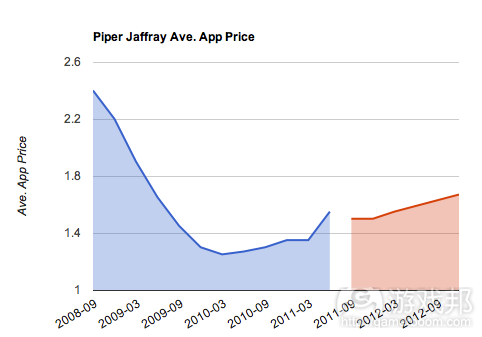




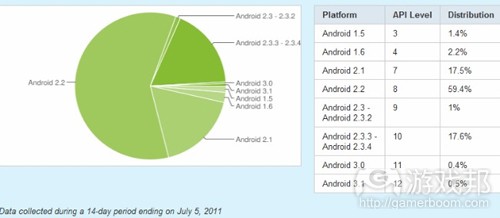

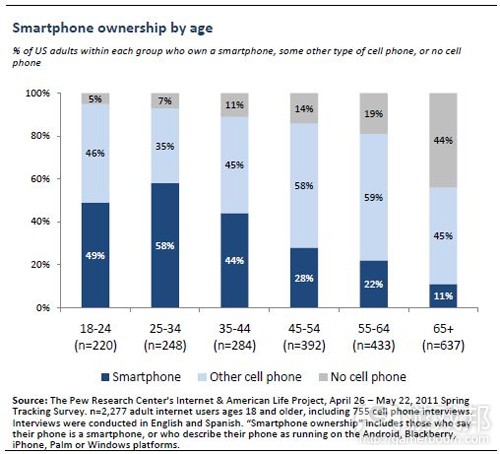

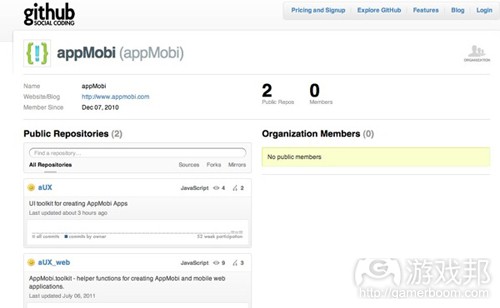
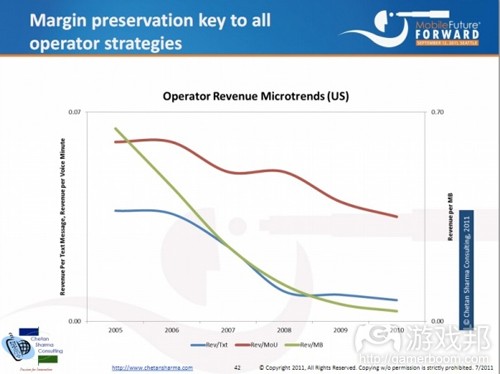
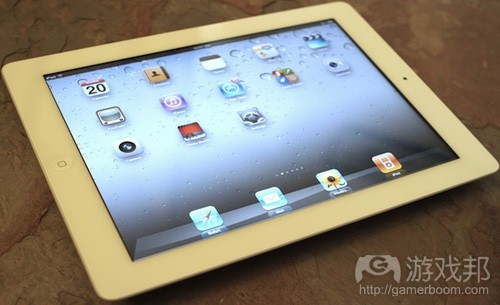














 闽公网安备35020302001549号
闽公网安备35020302001549号